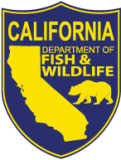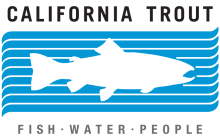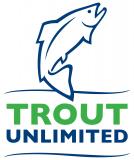
Water Rights Education
If you’re diverting water from a spring or stream, you need to be informed about your water rights and responsibilities.
A Guide to California Water Rights for Small Water Users
Water is a Shared Resource and Public Trust Value
The State Water Resources Control Board Division of Water Rights (DWR) has begun notifiying landowners in watersheds on California's North Coast that diverting water without complying with state water laws could lead to enforcement action and fines of up to $1,000, plus $500 a day.
Compliance with state water law requires filing a few forms and acquiring permits as needed. The benefits of coming into compliance are the assurance of a property's water security and retention of the land’s value, while protecting our region’s vital fisheries and wildlife.
If you are a rural landowner interested in coming into compliance with California water law, review the required steps below.
Step 1: File a Statement of Diversion & Use
State water rights law requires all people diverting surface waters (springs, streams, and rivers), including diversion of water from subterranean streams flowing in known and definite channels, to file a basic statement that includes the following information related to the diversion: amount, location, method, and basis of water right.
How to File
Download the Statement of Water Diversion and Use form. The form is an initial filing. You will be notified every year to file a supplemental Statement. There is no fee to file.
Helpful Tips
If you can’t determine the latitude and longitude, you may indicate on a topographic map the location of your diversion and include this as an attachment.
When indicating the rate of your diversion, a rough calculation will suffice, but don’t be afraid to get to know your water meter!
What if I Don’t File a Statement?
If you received a legal notice and you fail to respond after 30 days, you may be subject to fines o up to $1,000, plus $500 for every additional day of diversion where a Statement of Diversion has not been filed. If you do not have a valid basis of water right, your diversion could be subject to removal, particularly if your diversion is likely to contribute to significant and/or cumulative harms to public trust resources like fisheries.
Who is Exempt From Filing a Statement of Diversion & Use?
A Statement is not necessary if your diversion (1) has a valid basis of appropriative right, such as a certificate, permit, or license, (2) if a Watermaster files a report that includes the diversion, or (3) if you are diverting from a spring that does not otherwise flow off your property and your combined diversions do not exceed 25 acre-feet per year.
Step 2: Determine If You Need an Appropriative Right
If you cannot divert water under a riparian right, you will need to establish an appropriative water right through the State Water Resources Control Board’s Registrations Program.
Register Your Water Storage
Riparian water users have the right to divert water for beneficial use (i.e. domestic or agricultural) on their parcel as long as it doesn’t impair other riparian users and other beneficial uses of water including fish and wildlife. If you store winter water for use in the summer, you will need to establish a storage right.
How to Register
Click here to download the Small Domestic Use Registration Form. Announcement: During Governor Brown's Drought Emergency Declaration, a streamlined water tank registration process is in place for landowners that meet certain criteria. Please read this brochure to learn more. When filling out the Small Domestic Use Registration Form, you can self-certify that you meet the criteria to receive a 5-year registration without a site inspection or 1600 Agreement (described in Step 3) from the CA Department of Fish and Wildlife.
Domestic Water Storage Rights
A relatively simple way to secure an appropriative right is to file a Registration of Small Domestic Use, which allows storage of three million gallons. Whether or not you need an appropriative right, it is important for all of us to do our part to protect fish and wildlife. Developing water storage minimizes taking water out of our creeks in the summer. Winter water storage ensures both landowners and fish have enough water in the dry season. The cost is $250 for a five year registration. The California Department of Fish and Wildlife (CDFW) may conduct a site visit to provide protective terms for fish and wildlife resources based on site conditions.
What if I Don’t Register My Water Storage?
You may be asked to remove your water storage system and subsequently draw unwanted attention from state agencies to your neighborhood.
A lake or streambed alteration agreement may also be required by CDFW, this is determined by on the environmental conditions and the project itself. 1600 Agreement information and form can be found here.
Step 3: Fish and Wildlife Protection
Your diversion of water or other alteration of streams (construction or modification of culverts, etc.) may require special notification to CDFW, which has the job of managing California’s fish and wildlife resources and their habitats for their ecological value and enjoyment by the public. CDFW issues Lake and Streambed Alteration permits (‘1600 agreements’) that may put limits on your diversion to ensure that public trust resources, including fish, are protected. From the CDFW website:
Notification is required by any person, business, state, or local government agency, or public utility that proposes an activity that will:
- substantially divert or obstruct the natural flow of any river, stream or lake
- substantially change or use any material from the bed, channel, or bank of, any river, stream, or lake
- deposit or dispose of debris, waste, or other material containing crumbled, flaked, or ground pavement where it may pass into any river, stream, or lake.
If your diversion matches any of these criteria, you may need a 1600 agreement. Contact CDFW for information on fees (which vary depending on the project) and how to get started:
CA Dept. of Fish & Wildlife
Eureka Office, 619 Second Street, Eureka, CA 95501
(707) 445-6493





